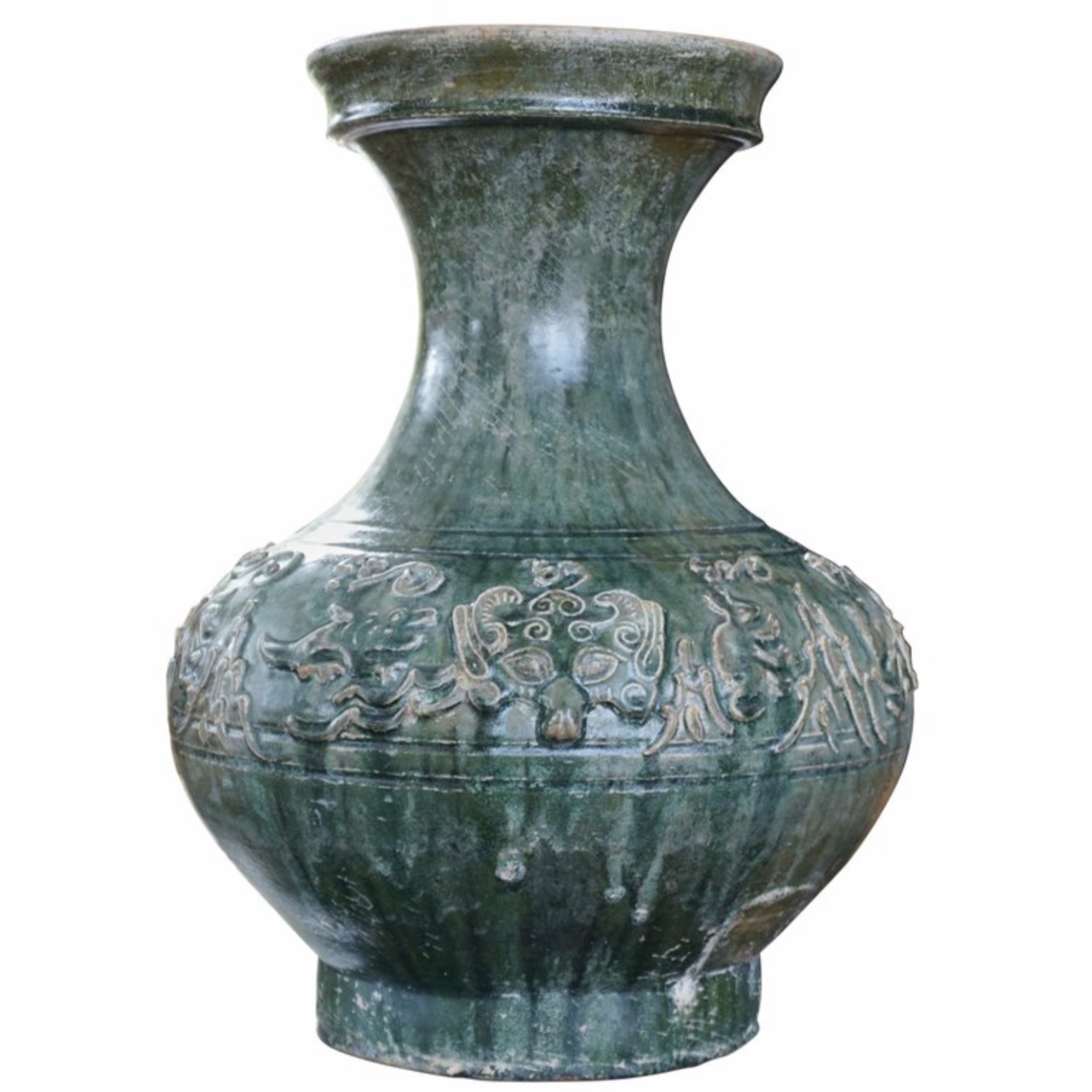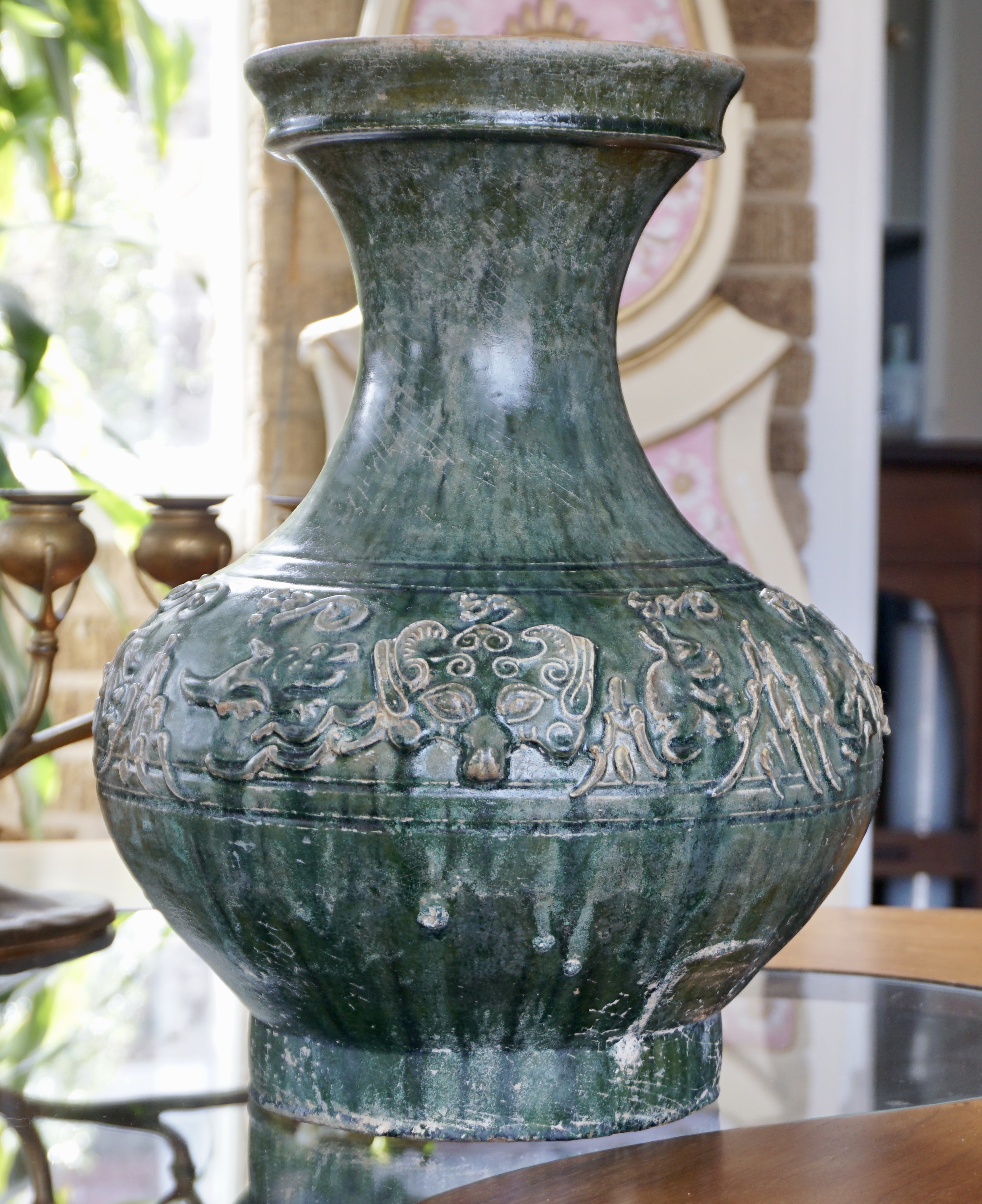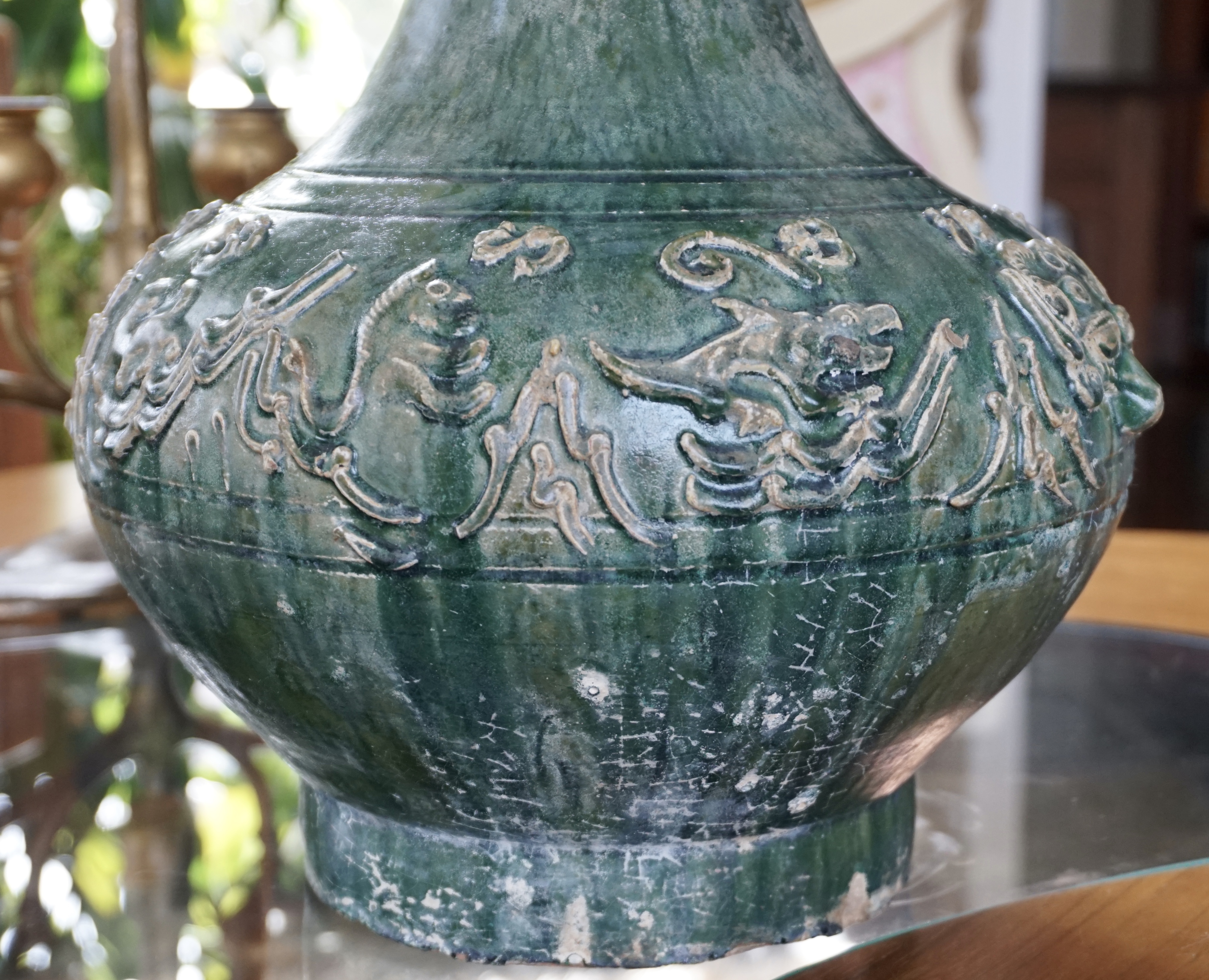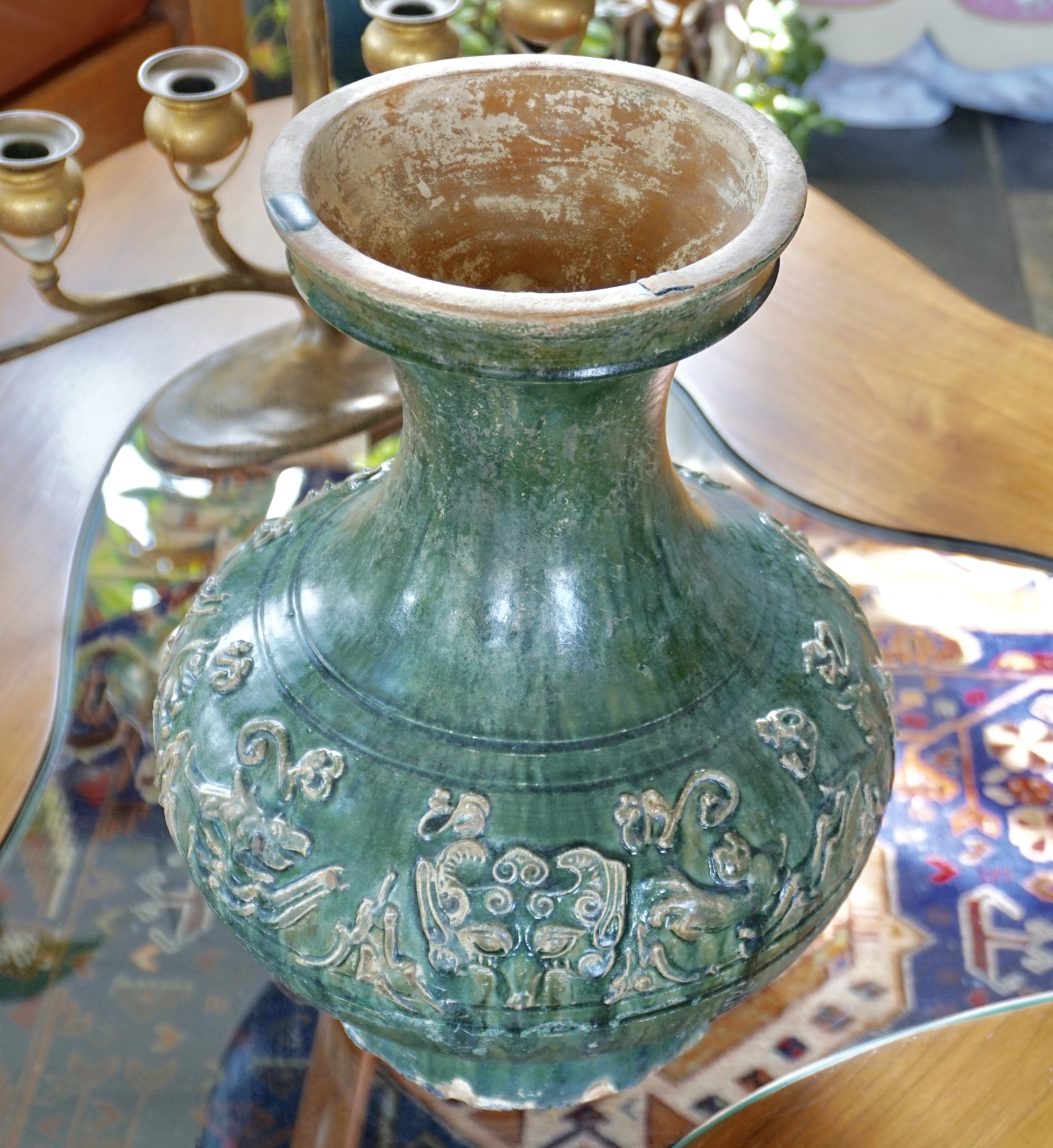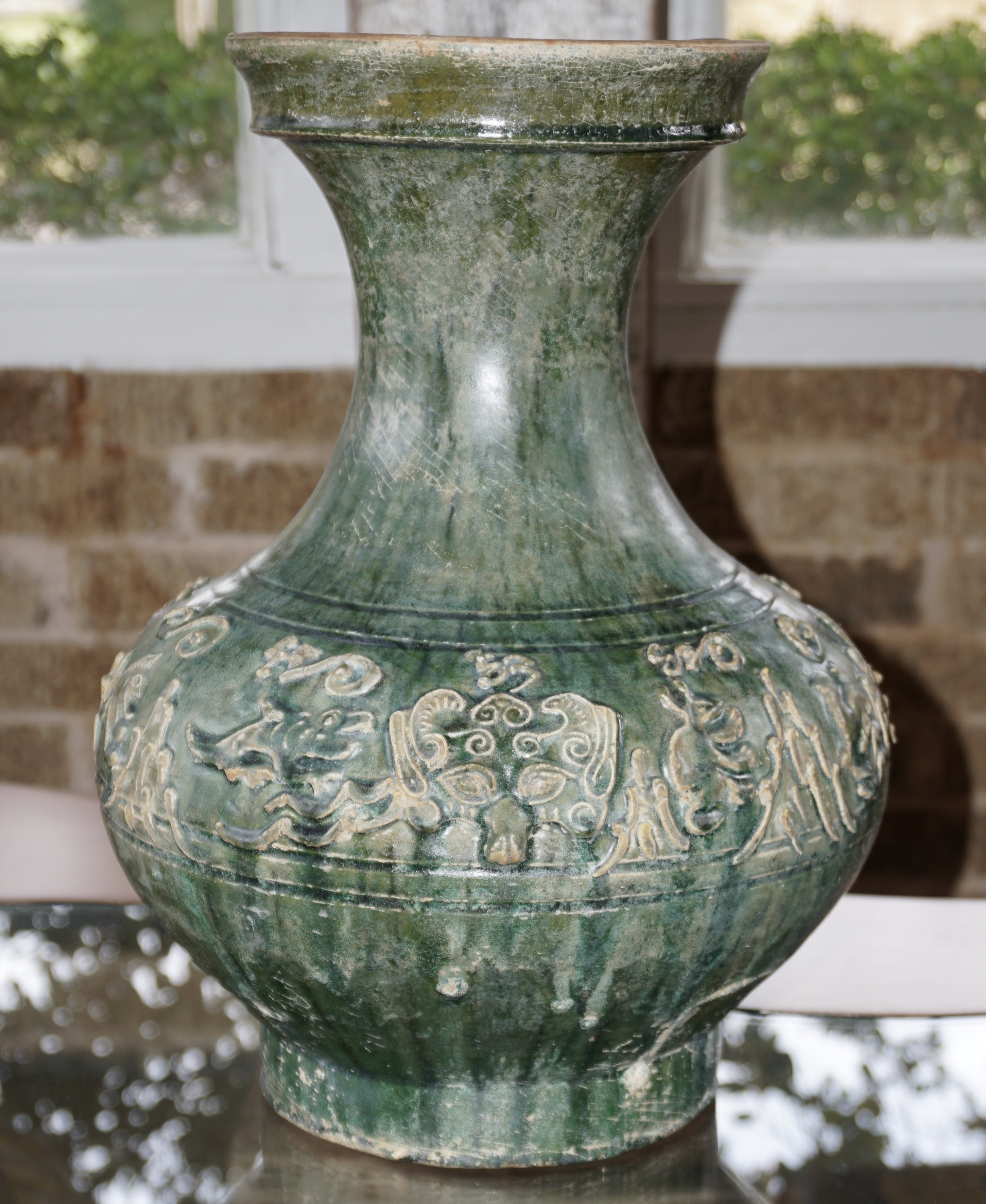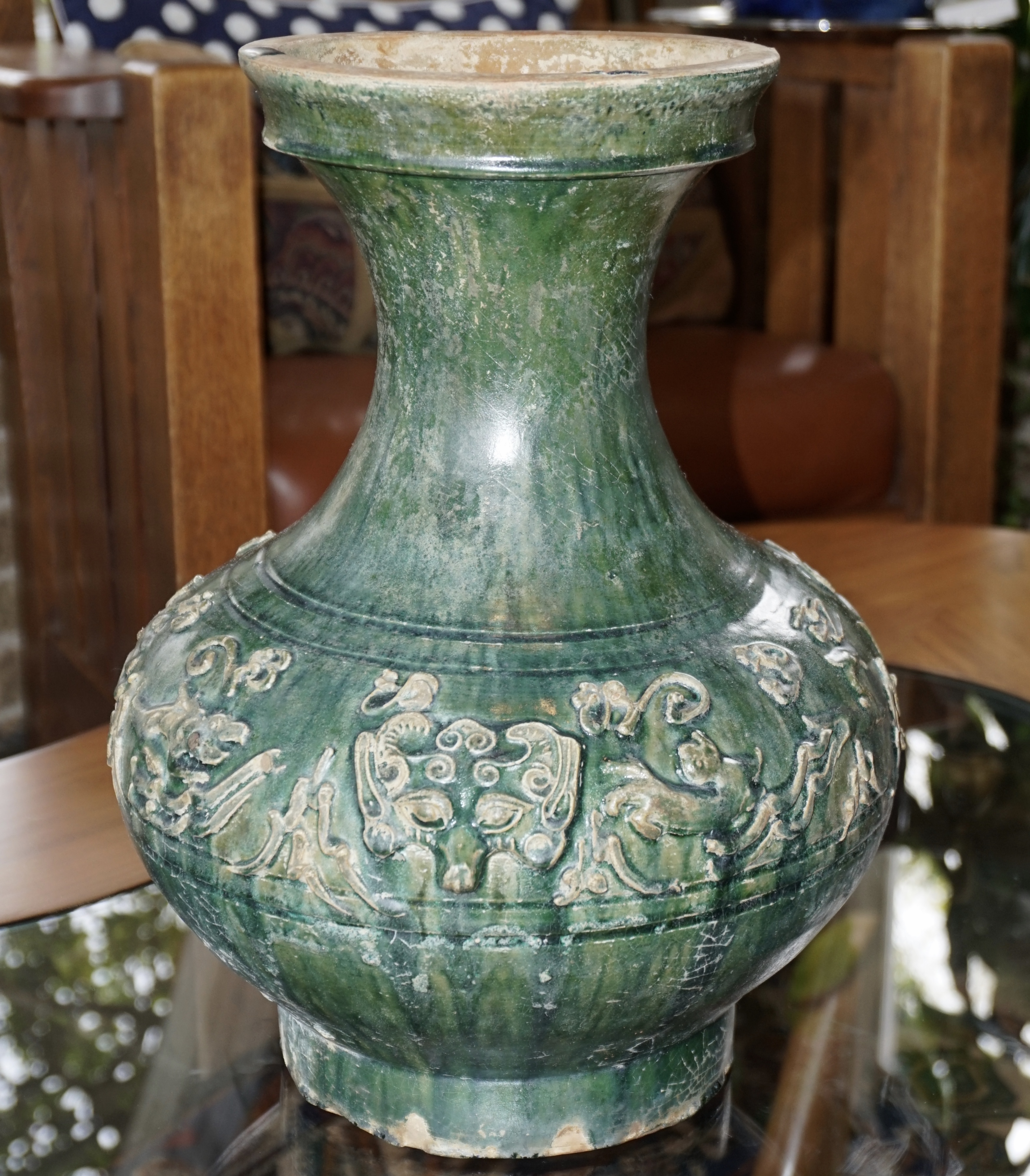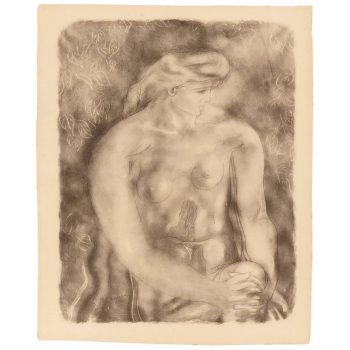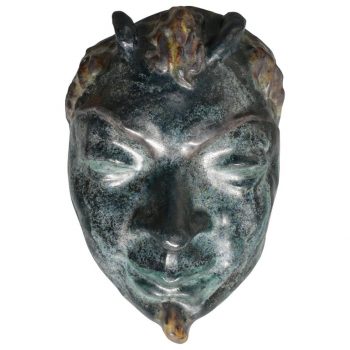Description
A large and decorative Chinese green-glazed pottery hu vase.
Han dynasty (206 BC – 220 AD).
The compressed globular body encircled by eight mystical beasts of monkeys, Rabbits, deer, lions, dogs and cats. The beasts are separated by mountains with clouds overhead. On opposite sides are applied taotie mask handles. The waisted neck surmounted by an everted galleried rim with a double bow-string band, supported on a tapering foot, covered with an olive-green glaze.
Measures: Height 14.25 inches. (36 cm.) Diameter 11 inches (27 cm.).
Condition: Museum grade with no visible repairs. All original!
This is a large, painted storage jar that would have been placed in a tomb in north-central China during the Western Han dynasty (206 B.C.E.–9 C.E.). It is based on the hu bronze wine vessel shape, particularly inlaid bronzes from the late Shang dynasty through the Warring States (472–221 B.C.E.) periods. The shape of the hu may have been based on the vegetable gourd. This is a green glazed vessel with raised detailed archaic decoration. Like the bronzes, it has horizontal bands that divide up the decorative sections.
During the Han, a variety of cults and belief systems existed. Some systems aimed to prolong life, others to provide for continued life in the tomb, still others assumed the presence of immortal kingdoms to which the soul was transported. Not everyone could afford inlaid bronzes and decorative lacquers for their tombs, so ceramic models imitated these forms and their decorations, and were placed in tombs.
The designs on this vessel were undoubtedly influenced by those on bronze vessels and lacquer ware. The cloud motif (yun wen) on the surface decoration can be interpreted in several ways. It can be seen as an auspicious symbol, protecting the spirit of the deceased. Clouds can depict the land of the immortals, a place often associated with mountains where clouds would gather. They can also depict sky constellations and astrological beliefs. White clouds could also represent vital energy (qi) or cloud breath (yunqi), substances that would be important to a soul seeking immortality.
During the Han, the Chinese distinguished two different elements of the soul: hun and po. During life, hun was the intellectual or spiritual soul. Po dealt with the physical body’s movement and energy. After death, the two would separate. Po stayed with the body, therefore it needed to be given all the material comforts of real life. Hun journeyed off to immortal realms in what many feared was a perilous journey. Many variations on this theme occurred and are reflected in various burial practices and tomb imagery. The vessel depicted here shows various responses to the search for immortality.


